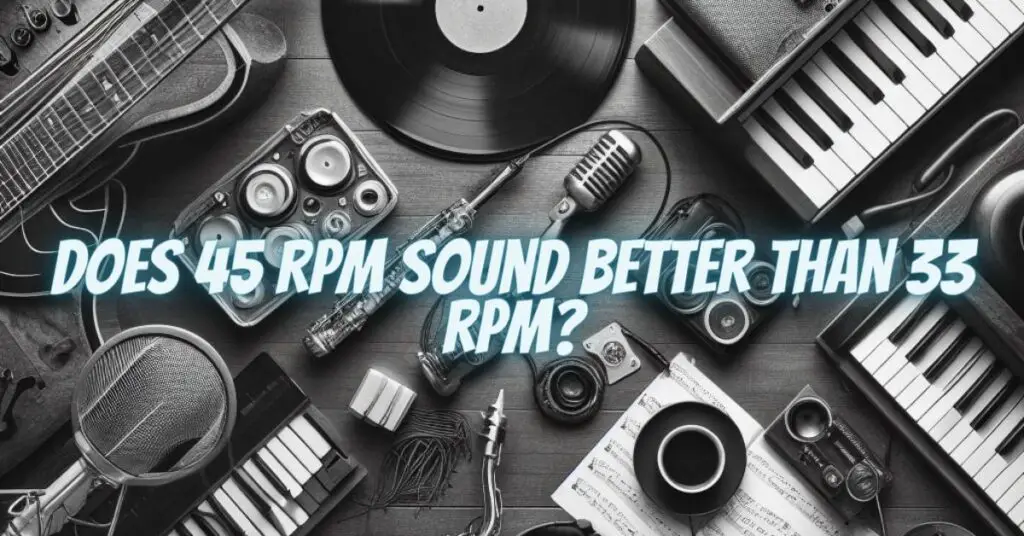Vinyl records are cherished for their unique sound quality and tactile experience, with playback speed being a crucial factor in how music is reproduced. The debate between 45 RPM (revolutions per minute) and 33 RPM often centers around sound fidelity and the overall listening experience. Let’s delve into the differences between these two speeds and their impact on vinyl playback:
Understanding Playback Speeds
- 33 RPM (Revolutions Per Minute):
- Standard Speed: Most full-length albums (LPs) are played at 33 RPM. This speed allows for longer playing times per side, typically around 22 minutes or more, depending on the groove spacing and record diameter.
- Sound Characteristics: At 33 RPM, the groove velocity is slower, which can result in more information being packed into each groove. This can contribute to a warmer, fuller sound with potentially better bass response and overall depth.
- 45 RPM (Revolutions Per Minute):
- Higher Speed: 45 RPM is typically used for singles or EPs. This faster speed reduces the amount of music playable per side but allows for more detailed groove modulation and potentially higher fidelity.
- Sound Characteristics: The higher groove velocity at 45 RPM can yield improved clarity, tighter bass response, and better separation of instruments and vocals. Some argue that this speed offers a more dynamic and lifelike sound compared to 33 RPM.
Sound Quality Comparison
- Dynamic Range and Fidelity:
- Proponents of 45 RPM argue that the faster speed allows for more precise groove modulation, resulting in enhanced fidelity and dynamic range. This can lead to a cleaner sound with better resolution of intricate details in the music.
- Bass and Low-End Response:
- The slower groove velocity of 33 RPM records may result in a slightly warmer sound with potentially richer bass tones. However, 45 RPM records can offer tighter bass response and improved transient accuracy, depending on the mastering and pressing quality.
- Listener Preference:
- Ultimately, whether 45 RPM sounds “better” than 33 RPM is subjective and depends on individual preferences. Some listeners prefer the enhanced clarity and detail of 45 RPM, while others appreciate the fuller, more atmospheric sound of 33 RPM.
Practical Considerations
- Record Length and Playability:
- 33 RPM records accommodate longer playing times per side, making them suitable for full albums and extended listening sessions without frequent interruptions for flipping sides.
- 45 RPM records, while offering potentially higher fidelity, typically require more frequent side changes due to their shorter playing times per side.
- Mastering and Pressing Quality:
- The quality of mastering and vinyl pressing plays a significant role in determining overall sound quality, regardless of playback speed. Well-mastered and pressed records at either speed can provide a satisfying listening experience.
Conclusion
The choice between 45 RPM and 33 RPM ultimately comes down to personal preference and the desired listening experience. While 45 RPM records may offer enhanced clarity and detail, 33 RPM records can provide a warmer, more atmospheric sound with potentially richer bass tones. Both speeds have their place in the world of vinyl records, offering distinct sonic characteristics that cater to different tastes and musical genres. Whether enjoying the dynamic clarity of 45 RPM or the immersive warmth of 33 RPM, vinyl enthusiasts continue to appreciate the unique charms of each speed in preserving the artistry and fidelity of their favorite music.

